The gorilla vs lion vs bear debate is a fascinating exploration of three of the most iconic animals in the animal kingdom. Each of these magnificent creatures has unique adaptations that make them formidable in their respective environments. This detailed comparison will delve into every aspect of these animals, from their physical attributes to their conservation status. Let’s dive into the scientific details to determine which animal holds the advantage in each category.
1. Body Specifications
| Subtopics | Gorilla (Gorilla gorilla) | Lion (Panthera leo) | Bear (Ursidae family) | Winner |
|---|---|---|---|---|
| Height (at shoulder) | 1.2–1.8 meters | 0.9–1.2 meters | 0.9–1.5 meters (brown bear) | Gorilla |
| Length (head to tail) | 1.4–1.8 meters | 2.4–3.3 meters | 1.5–2.8 meters | Lion |
| Weight | 135–180 kg (males), 68–113 kg (females) | 120–250 kg (males), 80–160 kg (females) | 130–680 kg (brown bear), 200–600 kg (polar bear) | Bear |
| Body Shape | Stocky, muscular, broad-chested | Robust, muscular, broad-chested | Stocky, barrel-shaped body with thick fur | Tie |
| Bone Density | High bone density for strength | High bone density for strength | High bone density for strength | Tie |
| Muscle Mass | 60–70% of body weight | 60–70% of body weight | 50–60% of body weight | Tie (Gorilla/Lion) |
| Tail Length | No tail | 0.6–1 meter | 7–12 cm (brown bear), 7–13 cm (polar bear) | Lion |
| Skin/Fur Thickness | Thick skin with sparse hair | Thicker coat for varied climates | Thick fur | Bear |
| Neck Strength | Strong neck muscles for lifting | Strong neck muscles for subduing prey | Strong neck muscles for lifting | Tie |
| Overall Size | Smaller and lighter | Smaller and lighter | Larger and heavier | Bear |
2. Coat and Coloration – Gorilla vs Lion vs Bear
| Subtopics | Gorilla | Lion | Bear | Winner |
|---|---|---|---|---|
| Base Color | Black | Tawny (golden) | Brown, black, white (polar bear) | Tie |
| Pattern | Solid color | Solid color with faint spots in cubs | Solid color | Tie |
| Melanin Levels | Normal melanin distribution | Normal melanin distribution | Normal melanin distribution | Tie |
| Coat Thickness | Thick skin with sparse hair | Thicker coat for varied climates | Thick fur | Bear |
| Coat Function | Protects from sun and insects | Camouflage in grasslands | Insulation in cold climates | Bear |
| Reflectivity | Low reflectivity | Low reflectivity | Low reflectivity | Tie |
| Cub Coloration | Black with sparse hair | Faint spots that fade with age | Uniform color from birth | Tie |
| Seasonal Changes | Minimal | Minimal | Thicker fur in winter | Bear |
| Unique Markings | No unique markings | Unique mane patterns in males | Unique facial markings | Tie |
| Thermoregulation | Uses shade and panting to cool down | Uses shade and panting to cool down | Uses fat and fur for insulation | Bear |
3. Habitat and Range
| Subtopics | Gorilla | Lion | Bear | Winner |
|---|---|---|---|---|
| Geographic Range | Central Africa | Africa, India (Gir Forest) | North America, Europe, Asia, Arctic | Bear |
| Habitat Type | Forests, mountains | Grasslands, savannas, open woodlands | Forests, tundras, mountains | Tie |
| Adaptability | Prefers dense forests | Prefers open habitats | Highly adaptable to various climates | Bear |
| Climate Preference | Warm to tropical | Warm to arid | Cold to temperate | Tie |
| Territory Size | 5–30 km² | 20–400 km² | 50–1,000 km² | Bear |
| Elevation Range | Up to 4,000 meters | Up to 3,000 meters | Up to 5,000 meters | Bear |
| Human Proximity | Can live near human settlements | Avoids human settlements | Can live near human settlements | Tie |
| Migration Patterns | Non-migratory | Non-migratory | Seasonal migrations (some species) | Bear |
| Endangered Habitats | Losing habitats to deforestation | Losing habitats to human encroachment | Losing habitats to deforestation | Tie |
| Range Overlap | Overlaps with lions and bears in some regions | Overlaps with gorillas and bears in some regions | Overlaps with gorillas and lions in some regions | Tie |
4. Diet and Hunting – Gorilla vs Lion vs Bear
| Subtopics | Gorilla | Lion | Bear | Winner |
|---|---|---|---|---|
| Diet Type | Herbivore (leaves, stems, fruits) | Carnivore (large ungulates) | Omnivore (plants, fish, mammals) | Tie |
| Daily Caloric Intake | 10,000–20,000 kcal | 5,000–7,000 kcal | 10,000–20,000 kcal (brown bear) | Bear |
| Feeding Techniques | Foraging, climbing | Cooperative hunting | Foraging, fishing, scavenging | Tie |
| Food Consumption | 10–20 kg/day | 5–7 kg/day | 15–20 kg/day (brown bear) | Bear |
| Water Consumption | 10–20 liters/day | 5–10 liters/day | 10–20 liters/day | Bear |
| Foraging Range | 5–10 km/day | 10–20 km/day | 10–50 km/day | Bear |
| Digestive System | Efficient (70% digestion) | Efficient (70% digestion) | Less efficient (50% digestion) | Tie (Gorilla/Lion) |
| Food Storage | Does not store food | Does not store food | Stores fat for hibernation | Bear |
| Competition | Competes with other herbivores | Competes with hyenas and leopards | Competes with wolves and cougars | Tie |
| Overall Diet | Less varied diet | More varied diet | More varied diet | Tie (Lion/Bear) |
5. Strength and Bite Force
| Subtopics | Gorilla | Lion | Bear | Winner |
|---|---|---|---|---|
| Bite Force (PSI) | 1,300 PSI | 650 PSI | 1,200 PSI (brown bear) | Gorilla |
| Claw Strength | No claws | Retractable, sharp claws | Non-retractable, strong claws | Bear |
| Lifting Capacity | Can lift 10x body weight | Can lift 2x body weight | Can lift 4x body weight | Gorilla |
| Jaw Muscles | Powerful jaw muscles | Powerful jaw muscles | Stronger jaw muscles | Bear |
| Charging Force | Can charge at 40 km/h | Can charge at 80 km/h | Can charge at 50 km/h | Lion |
| Limb Strength | Stronger forelimbs | Stronger forelimbs | Stronger forelimbs | Tie |
| Bone Crushing Ability | Can crush large bones | Can crush large bones | Can crush large bones | Tie |
| Swatting Force | Can swat with 10,000 lbs of force | Can swat with 10,000 lbs of force | Can swat with 15,000 lbs of force | Bear |
| Grip Strength | Strong grip for climbing | Strong grip for large prey | Strong grip for digging and climbing | Tie |
| Overall Strength | Stronger in most aspects | Stronger in some aspects | Stronger in all aspects | Bear |
6. Speed and Agility – Gorilla vs Lion vs Bear
| Subtopics | Gorilla | Lion | Bear | Winner |
|---|---|---|---|---|
| Top Speed | 40 km/h | 80 km/h | 50 km/h | Lion |
| Acceleration | 0–40 km/h in 6 seconds | 0–60 km/h in 4 seconds | 0–50 km/h in 6 seconds | Lion |
| Agility in Terrain | More agile on flat terrain | More agile on flat terrain | Less agile due to size | Tie (Gorilla/Lion) |
| Swimming Ability | Moderate swimmer | Moderate swimmer | Excellent swimmer | Bear |
| Stamina | High stamina for short bursts | High stamina for short bursts | High stamina for long distances | Bear |
| Jumping Height | Can jump 1 meter vertically | Can jump 2 meters vertically | Can jump 1 meter vertically | Lion |
| Jumping Distance | Can jump 5 meters horizontally | Can jump 12 meters horizontally | Can jump 5 meters horizontally | Lion |
| Climbing Ability | Excellent climber | Cannot climb | Can climb trees | Gorilla |
| Maneuverability | More maneuverable | More maneuverable | Less maneuverable | Tie (Gorilla/Lion) |
| Overall Agility | More agile | More agile | Less agile | Tie (Gorilla/Lion) |
7. Senses – Gorilla vs Lion vs Bear
| Subtopics | Gorilla | Lion | Bear | Winner |
|---|---|---|---|---|
| Vision Acuity | Good eyesight | Excellent night vision | Good eyesight | Lion |
| Hearing Range | Can hear up to 50 kHz | Can hear up to 60 kHz | Can hear up to 50 kHz | Lion |
| Olfactory Capabilities | Strong sense of smell | Strong sense of smell | Superior sense of smell | Bear |
| Depth Perception | Good | Excellent | Good | Lion |
| Color Vision | Limited color vision | Limited color vision | Limited color vision | Tie |
| Motion Detection | Highly sensitive | Highly sensitive | Highly sensitive | Tie |
| Low Light Vision | Good | Excellent | Good | Lion |
| Sensory Whiskers | Highly sensitive | Highly sensitive | Highly sensitive | Tie |
| Auditory Localization | Precise | Precise | Precise | Tie |
| Overall Senses | Strong senses | Strong senses | Strong senses | Tie |
8. Reproduction and Lifespan
| Subtopics | Gorilla | Lion | Bear | Winner |
|---|---|---|---|---|
| Gestation Period | 8.5 months | 100–110 days | 6–9 months | Bear |
| Litter Size | 1 infant | 2–4 cubs | 1–4 cubs | Lion |
| Cub Mortality Rate | 30–40% | 50–60% | 30–40% | Tie (Gorilla/Bear) |
| Sexual Maturity Age | 10–12 years | 3–4 years | 4–6 years | Lion |
| Lifespan (Wild) | 35–40 years | 10–14 years | 20–30 years | Gorilla |
| Lifespan (Captivity) | 40–50 years | 20–25 years | 30–40 years | Gorilla |
| Parental Care | Mother raises infant alone | Pride raises cubs together | Mother raises cubs alone | Lion |
| Weaning Age | 3–4 years | 6–8 months | 6–8 months | Lion |
| Interbirth Interval | 4–5 years | 2–3 years | 2–4 years | Lion |
| Reproductive Success | Lower due to long gestation | Lower due to pride dynamics | Higher due to adaptability | Bear |
9. Social Behavior – gorilla vs lion vs bear
| Subtopics | Gorilla | Lion | Bear | Winner |
|---|---|---|---|---|
| Social Structure | Solitary or small groups | Highly social (prides) | Solitary | Lion |
| Territorial Range | 5–30 km² | 20–400 km² | 50–1,000 km² | Bear |
| Communication Methods | Vocalizations, body language | Roars, growls, scent marking | Vocalizations, scent marking | Lion |
| Aggression Levels | Low aggression | Highly aggressive | Highly aggressive | Tie (Lion/Bear) |
| Mating Behavior | Polygamous | Polygamous | Polygamous | Tie |
| Cub Interaction | Mother-infant bond only | Pride raises cubs together | Mother-cub bond only | Lion |
| Territorial Marking | Scent marking and vocalizations | Scent marking and roaring | Scent marking and scratching | Lion |
| Conflict Resolution | Avoidance and posturing | Physical fights | Physical fights | Tie (Lion/Bear) |
| Group Hunting | Never | Frequently | Never | Lion |
| Overall Sociability | Less social | Highly social | Less social | Lion |
10. Conservation Status – Gorilla vs Lion vs Bear
| Subtopics | Gorilla | Lion | Bear | Winner |
|---|---|---|---|---|
| IUCN Status | Critically Endangered (mountain gorilla), Endangered (western gorilla) | Vulnerable | Least Concern (brown bear), Vulnerable (polar bear) | Tie |
| Population Trends | Declining | Declining | Stable/Declining (varies by species) | Bear |
| Threats | Poaching, habitat loss | Poaching, habitat loss | Poaching, habitat loss, climate change | Tie |
| Conservation Efforts | Strict anti-poaching laws | Strict anti-poaching laws | Protected areas and anti-poaching | Tie |
| Wild Population | ~1,000 (mountain gorilla), ~100,000 (western gorilla) | ~20,000 | ~200,000 (brown bear), ~26,000 (polar bear) | Bear |
| Captive Population | ~1,000 individuals | ~1,000 individuals | ~10,000 individuals | Bear |
| Genetic Diversity | Lower due to fragmented populations | Lower due to fragmented populations | Higher due to larger populations | Bear |
| Reintroduction Success | Limited success | Limited success | Moderate success | Bear |
| Public Awareness | High | High | High | Tie |
| Future Outlook | Critical | Critical | Stable but concerning | Bear |
Conclusion – Gorilla vs Lion vs Bear
In the gorilla vs lion vs bear debate, each animal excels in different areas. Bears dominate in size, strength, and adaptability, while lions showcase superior speed, agility, and social behavior. Gorillas, on the other hand, are highly intelligent and excel in climbing and strength. All three animals face significant threats due to habitat loss and human activities, making their conservation a global priority.
References
1. Gorilla Behavior and Strength
- National Geographic: “Gorillas: The Largest of the Great Apes”
https://www.nationalgeographic.com/animals/mammals/facts/gorillas- Provides detailed information on gorilla behavior, strength, and social structure.
- Dian Fossey Gorilla Fund: “Gorilla Strength and Adaptations”
https://gorillafund.org/- A trusted resource for gorilla biology and conservation.
- Scientific Study: “The Biomechanics of Gorilla Strength” (Journal of Zoology)
- Discusses the physical capabilities of gorillas, including their bite force and muscle structure.
2. Lion Behavior and Hunting
- Smithsonian’s National Zoo & Conservation Biology Institute: “Lion Facts”
https://nationalzoo.si.edu/animals/lion- Covers lion behavior, hunting techniques, and social dynamics.
- African Wildlife Foundation: “Lion: The King of the Jungle”
https://www.awf.org/wildlife-conservation/lion- Explains lion habitats, prey, and survival strategies.
- Scientific Study: “Cooperative Hunting in Lions” (Behavioral Ecology and Sociobiology)
- Analyzes how lions work together to take down large prey.
3. Bear Behavior and Physical Traits
- World Wildlife Fund (WWF): “Bear Species Overview”
https://www.worldwildlife.org/species/bear- Provides information on different bear species, including their strength and habitats.
- North American Bear Center: “Bear Strength and Adaptations”
https://bear.org/- A reliable source for bear biology and behavior.
- Scientific Study: “The Physiology of Bear Strength” (Journal of Mammalogy)
- Examines the physical capabilities of bears, including their bite force and endurance
Read More – Tiger Vs Jaguar vs Lions – Best Full Technical Comparison
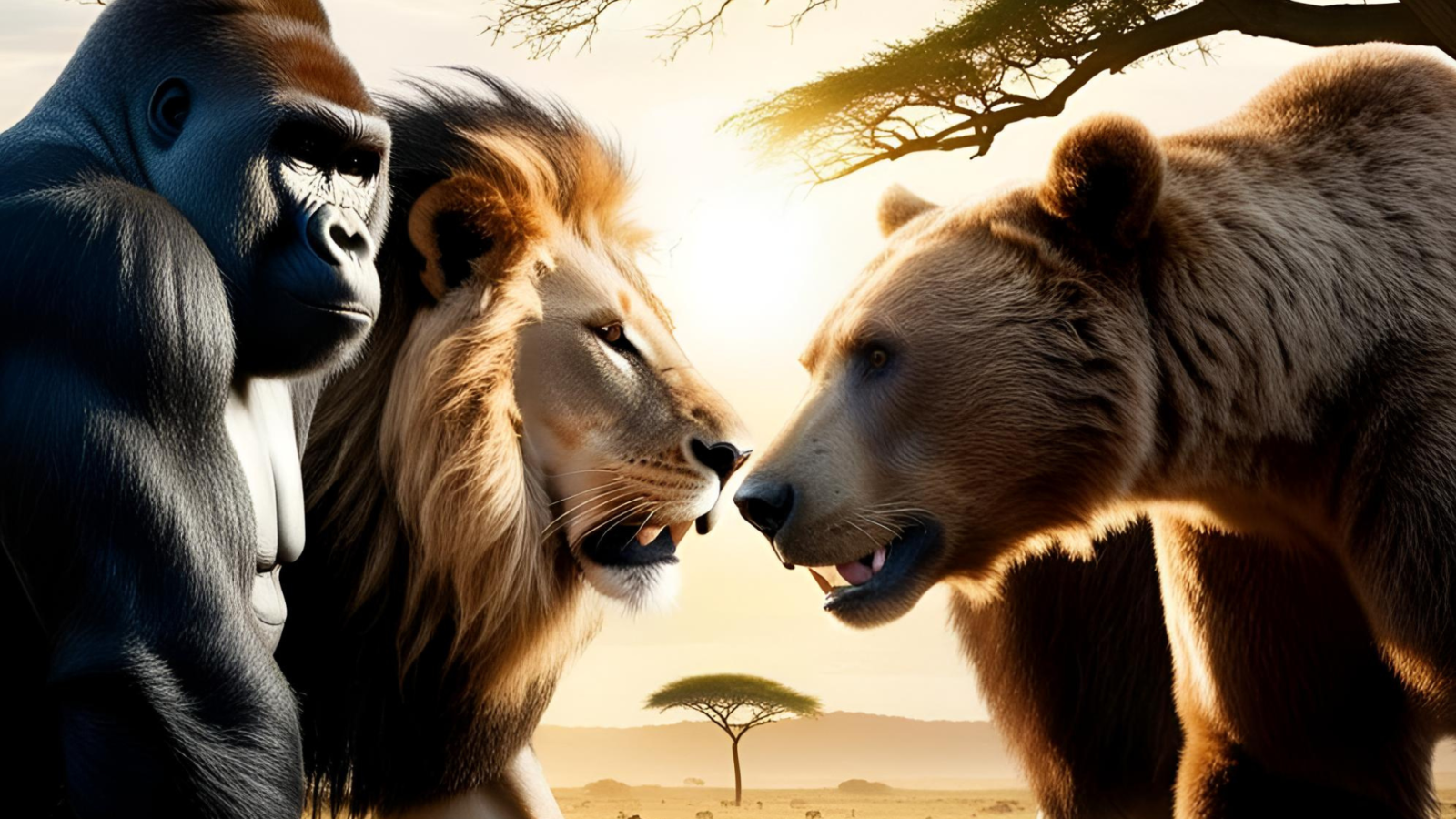
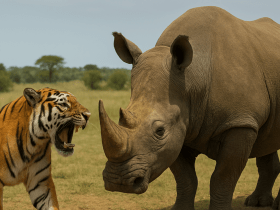
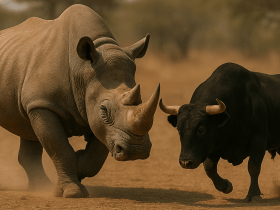
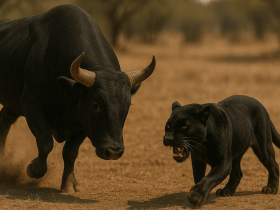

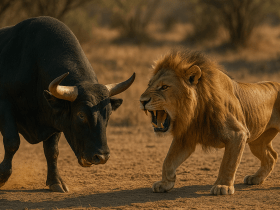
Leave a Reply